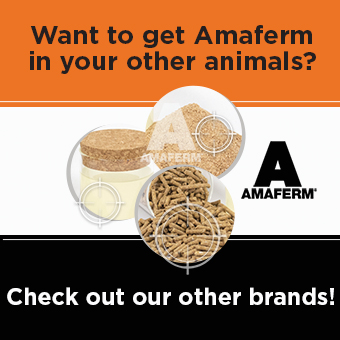Fuel efficiency is a concern no matter where you fit in today’s challenging economic times. When purchasing a vehicle, one typically searches for the one we like that gives us more miles per gallon. In other words, we are continuously stretching the dollar and trying to find the best economic benefit in our daily decisions. This same thought process occurs when making decisions regarding the diets of our equine companions. Research has shown that over 60% of today’s horses have some type of ulcer issue and many suffer from some sort of digestive disorder due to stress, nutrition, illness, de-worming, change in diet, senior status, etc. These matters along with an “unnatural habitat” have caused horses to be less fuel-efficient. Their engines are just not running on all the cylinders necessary to maximize efficiency.
As strict herbivores, horses have evolved a complex intestinal arrangement that focuses most of digestion in the enormous hindgut. It is there, in the large intestine that the bulk of nutrients are broken down by the micro-flora (bugs). These bugs take the feedstuffs that the horse consumes and break them down so absorption can occur. This can only take place when the hindgut is functioning at its optimum potential. Horse owners face problems when the hindgut is not functioning properly, or in other words, digestive disorders arise. These upsets can result in lack of performance, reproduction inefficiency, loss of body condition, poor immune function, and the dreaded colic.
Many digestive upsets can be the result of a pH imbalance in the hindgut. It is the pH imbalance that causes the good bugs to die, reducing digestion and availability of vital nutrients. Not only is the horse now less fuel efficient, but now the gut is also vulnerable to pathogens and medical complications.
When looking at the daily diet of a horse many factors need to be considered, age, exercise, lactation, weather, etc. On an average 1000# horse, dry matter intake should be about 1.5 to 2.0% of body weight or 15 to 20 pounds of hay and grain combined in a daily maintenance scenario. The diet is usually based on an intake that is roughly 35% grain and 65% forage. The unique digestive track is designed for grains to be broken down and converted to nutrients in the foregut and forages to be fermented and utilized as nutrients in the hindgut.
The ongoing challenge that all horse owners’ face is that the majority of the equine population has an extremely inefficient hindgut making it less fuel-efficient. Because the majority of the diet is processed in the hindgut, it allows for 30% to 80% of energy requirement to be met. To insure that the hind gut is functioning at its optimum potential we need to be sure that the fungal population in the hind gut is at a level for maximum digestion. Fungi are the bugs that are the procurers for the bacteria.
Many digestive products are available to enhance the digestive tract. They fit into one of two categories; probiotics or prebiotics. “Pro” means life, or in other words probiotics add live bugs to the gut. Prebiotics are food for the bugs. These products are founded on the bacterial part of digestion. Increased bacteria are extremely key in a high grain diet, but bacteria have minimal influence of fungi making more cellulose and hemicelluloses available to them in the digestion of fiber. Horse owners must understand that the bugs they need to focus on are the “fungi”. Increased fungi in the hindgut will allow the horse to become more fuel-efficient. With hay costing on an average of $.15/lb. or approximately $1.95 per day we need our horses to be as fuel efficient as possible.
Science has found that the unique prebiotic Amaferm® has an impact on four major fiber digesters that reside in the hindgut. Amaferm® has not only been proven statistically to have an influence on fungi but also to have an effect on bacteria. The fact of the matter is that horses are probably one of the least fuel-efficient animals around. This is partially due to design and partly because science focuses on products or aids for the foregut or small intestine, despite the fact that much forage digestion occurs in the hindgut. There are not many efforts focusing on the hindgut, but it is where the majority of the diet is being processed, in horses. Whether your horse is a high-level performance horse or a senior companion it deserves the benefit of Amaferm® to increase fuel efficiency.


